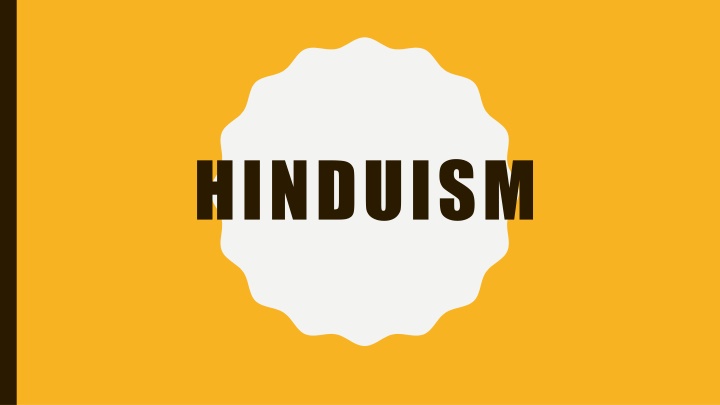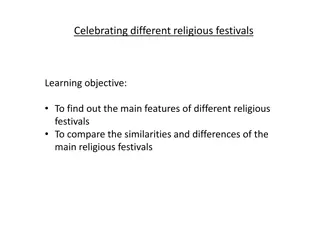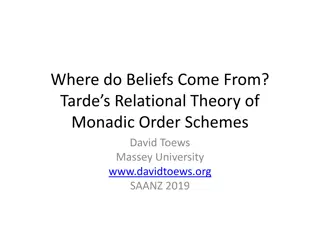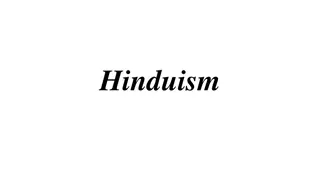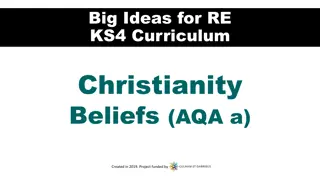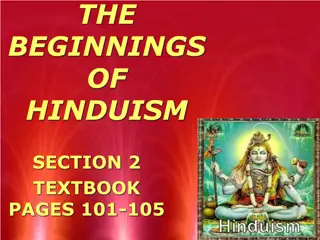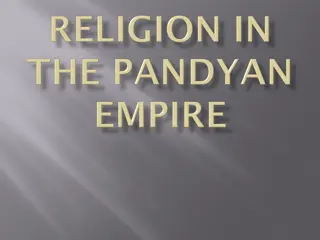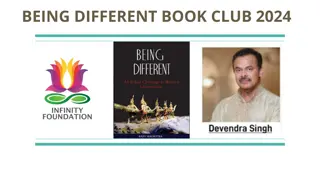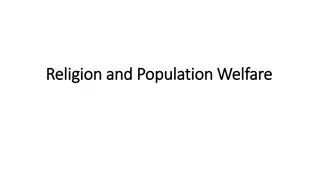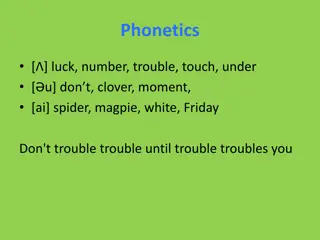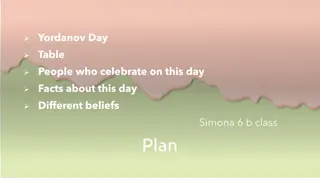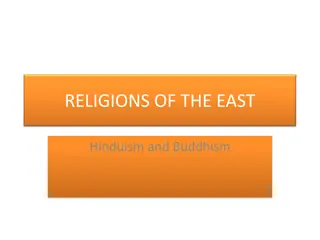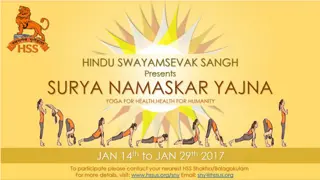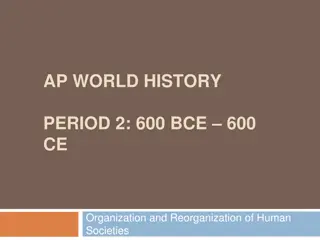Insights into Hinduism: Traditions, Beliefs, and Society
Hinduism, an ancient religion, developed by the Aryans in India, encompasses a diverse pantheon of gods, beliefs in reincarnation and karma, and a structured caste system. The worship of numerous gods reflects the monotheistic belief in Brahma. Social aspects, such as the caste system, play a significant role in Hindu society and culture.
Download Presentation

Please find below an Image/Link to download the presentation.
The content on the website is provided AS IS for your information and personal use only. It may not be sold, licensed, or shared on other websites without obtaining consent from the author.If you encounter any issues during the download, it is possible that the publisher has removed the file from their server.
You are allowed to download the files provided on this website for personal or commercial use, subject to the condition that they are used lawfully. All files are the property of their respective owners.
The content on the website is provided AS IS for your information and personal use only. It may not be sold, licensed, or shared on other websites without obtaining consent from the author.
E N D
Presentation Transcript
BACKGROUND Developed in India from the Aryans. The worship of Aryan priests followed complicated rituals and hymns known as the Vedas, of The Books of Knowledge. Hinduism is one of the oldest religions in the world. Hinduism is the 3rd largest religion in the world.
GODS There is a wide variety of gods to choose from to worship with statues and symbols to pay respect to. If one wants to pray for acquiring knowledge and understanding, he would pray to the god Sarasati, for example. One might pray to the god, Moksha, to obtain God s grace. Many Hindus worship their own village god or goddesses.
GODS Many Hindus view the religion as monotheistic with only one supreme being , Brahma. All other gods or goddesses are simply facets (parts of) this one God. In the Hindu faith, there is a trinity as in the Christian faith, where God is in three persons.
BELIEFS Believe in reincarnation, the idea that the soul does not die with the body, but enters the body of another being, either a person or animal. The type of life a person leads determines what his next life will be like. A good person will have a better life in his next reincarnation. An evil person will suffer in his next life. A soul is reincarnated over and over again, until the life it lives is good enough to bring it to be united with Brahman. The belief that one s actions determine one s fate is called Karma, another important Hindu belief.
SOCIETY/CULTURE Another important part of Hinduism is the caste system, a belief that social class is hereditary (inherited), and does not change throughout a persons life. The only way to move to a higher caste was to be born into one in the next life. You don t marry or work outside of our caste.
SOCIETY/CULTURE There are four main castes; priests and wise men, or Brahmans, are the highest warriors and rulers are next merchants, traders and small farmers are third the Sudras, or peasants and field workers, are last a fifth caste considered even lower, the untouchables, or pariahs, who do work no one else would do
ASSIGNMENT Worksheets with a partner.
BACKGROUND Buddhism started in India over 2,500 years ago. The essence of Buddhism is the attainment of enlightenment. It points to a way of life that avoids self- indulgence and self-denial. There is no supreme god or deity in Buddhism.
BUDDHA Siddhattha Gotama became Budda Lived in the 5th century BC and was a prince Saw the suffering of the world and decided to renounce (reject) his life. Decided to live among average people in search of truth and enlightenment. 6 years later he became enlightened whilst meditating under a Bodhi tree.
BUDDHA Siddhattha Gotama became Budda Lived in the 5th century BC and was a prince Saw the suffering of the world and decided to renounce (reject) his life. Decided to live among average people in search of truth and enlightenment. 6 years later he became enlightened whilst meditating under a Bodhi tree.
BUDDHA Buddha means enlightened. Buddha is not considered a god by his followers. All Buddhists undertake to live by the Five Moral Precepts which mean refraining from:
5 MORAL PRECEPTS Harming living things Taking what is not given Sexual misconduct Lying or gossip Taking intoxicating substances (drugs or alcohol)
CULTURE Meditation Shrines of Buddha. Give it flowers, food, incense. The Buddhist festival, Wesak, celebrates Buddha s birth, enlightenment, and death. Nirvana Day is a festival that remembers the death of Buddha when he reached Nirvana at the age of 80. Nirvana is the end of the cycle of death and rebirth.
SYMBOLS Wheel of life: cycle of life and rebirth Eightfold path: symbolized as a wheel with 8 spokes Lotus flower: purity and divine birth Crane is a symbol of happiness
ASSIGNMENT Worksheet Activity
